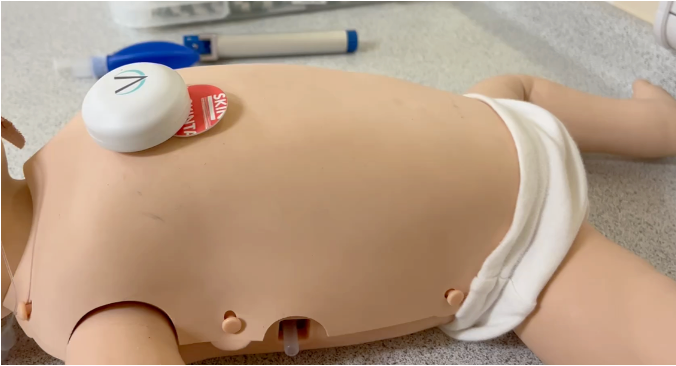Rotherham’s SEPIA tinted view
- 30 August 2016

Out of the chaos wrought by a painful implementation of a Meditech electronic patient record, Rotherham NHS Foundation Trust has crafted an in-house clinical portal.
Ken Dobson, associate director of IT at the Yorkshire trust, and interfacing and systems developer, Christopher Birks, show off the web-based system, the latest version of which was released in March this year.
Accessed through Google Chrome, clinicians can see information from Ascribe’s Symphony, Sunquest ICE, TPP’s SystmOne, Meditech and the Medical Interoperability Gateway on their mobiles, tablets and desktops.
In addition, the portal has some bespoke twists that have proved popular with the hospital staff. As Birks points out, you can see how many patients are celebrating their birthday in Rotherham’s care, which means no special days are forgotten.
Why create a clinical portal in house?
The portal was born out of the Supplementary Electronic Patient Index Aggregator (SEPIA) system, which Rotherham’s development team built to provide limited cover for its troubled Meditech v6.0 deployment.
Creating software internally creates some risks – Dobson acknowledges there is a particular concern around staff leaving and taking their knowledge with them – but he argues the benefits outweigh them.
“We’ve had opportunities we wouldn’t have been able to take advantage of and we wouldn’t have developed at this speed,” he says.
Anyway, the trust has a “talented development team”. And there was a financial incentive to use its own resources. “We didn’t particularly have the funds to go off and buy another piece; we had already gone through what is always a painful process with implementing the EPR.”
Implementing Meditech
Rotherham was one of the first trusts to break out of the National Programme for IT when it came to picking a new IT system, but it ran into severe difficulties in June 2012 when it went live with the then-new to the UK Meditech v6.0.
In February 2013, further go-lives were halted by a Monitor report and an external consultant was hired to conduct an immediate review of the system.
The enforcement action from Monitor was removed in July 2014. But when Digital Health News went up to Rotherham to see the portal in action, its mantra was still to keep things “slow and safe”.
In practice, this means that Birks has been doing fortnightly releases with a week break over the last six months.
What can the portal do?
The portal now has an interface with options to delve into different views including theatres, A&E, community, scheduling and ward.
Once inside, a viewer can see the patient’s demographics including attendances, lab results, live views of A&E with number of admissions and attendees, and discharge dates.
The information can be used to assist patient flows in A&E, as a planning tool by community nurses, and as a quick way to look up patient information without diving into the EPR.
Local GPs can also log-in, although when they do they get a different view – the Health Informatics Patient Portal or HIPPO.
What no user can do, through a deliberate decision, is “write back to the original system”.
If something needs to be changed, that amendment must be done in the base system. Dobson explains this was down to vendors “traditionally wanting you to use their system”, so “rather than trying to change the world, we changed the bit we had control over.”
Who uses it?
Access is controlled and individuals have certain access rights. But for Richard Slater, consultant surgeon and chief clinical information officer, the biggest beneficiaries are the community and site teams as “they are traditionally the interface between the acute and community side of the trust”.
“The main users are those that straddle the organisation.” Usage figures show more than 140,000 page views in July, with A&E and patient record being the modules most frequently accessed.
A former portal, which only showed the ward view and patient demographics, received just 4,000 page views in July 2015.
“It’s pulling information in, information that we’ve been collecting anyway, and displaying it back to clinicians in a visually appealing and intuitive interface that people can navigate very easily”, says Slater.
Over the next year, Birks reports that more systems will be integrated into the portal: Infoflex (cancer and endoscopy), PACS (clinical imaging), Tomcat (ECGs), LiquidLogic (CP-IS data) and Yorkshire Ambulance Service’s system (ambulance arrivals).
Managing expectations
However, the inability to write back has led to an issue of managing expectations. Feedback often includes complaints about not being able to make amendments directly in the portal; and this is an issue that is often raised at the monthly clinical portal development group and informatics development meetings.
Even so, Birks says the portal is making the lives of clinical staff easier. “The staff do the daily work in the core system anyway, the clinical portal is there as a tool to help. If it was making their lives harder, they wouldn’t use it,” he points out.
Can other trusts use it?
For Dobson there is a capacity for the system to be used elsewhere: “It is quite heavily tied to the systems we’ve got, but we’re looking at bits of it we can lift out and put elsewhere.”
However, money would be the critical problem. There has been no external funding for the portal, and to expand it out the trust would need to buy in some sort of development which would require funding, Dobson says.
Interoperability across Rotherham and beyond
Meantime, a key focus is increasing integration between Rotherham’s health and care providers. In a board paper dated 13 July 2016, a £400,000 proposal to support integration by expanding the portal’s links out into health and social care was discussed.
Rotherham’s local digital roadmap says the portal is a key part of enabling doctors in a new emergency centre, due to open 2017, to view the data from out-of-hours, walk-in, NHS111, ambulance, hospital and community systems.
There is also an ambition to exchange information in the south Yorkshire region. As Dobson notes: “Patients do not go up to the boundary and stop”, so: “The longer term strategy has to be wherever the patient goes is where the information needs to go.”
While the portal will never be finished, its aim is to keep access to everything in one place. “What we’re aiming to do is have one place,” Dobson explains.
“We know we’ll not, not in my lifetime, be in a position where we have one system, but what we’re trying to get to is two places – where you’re working normally and where you access the rest.”




